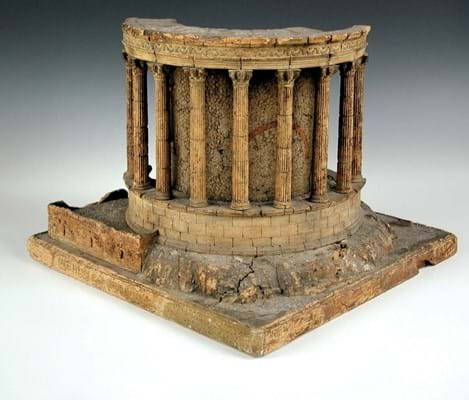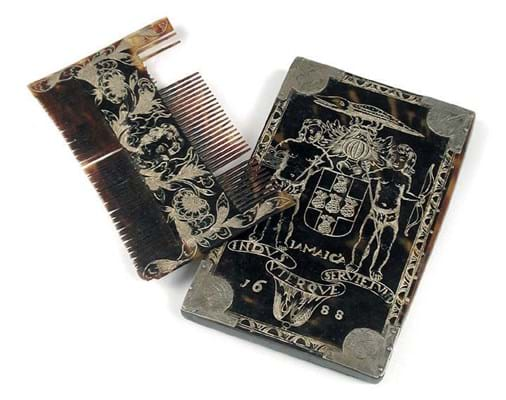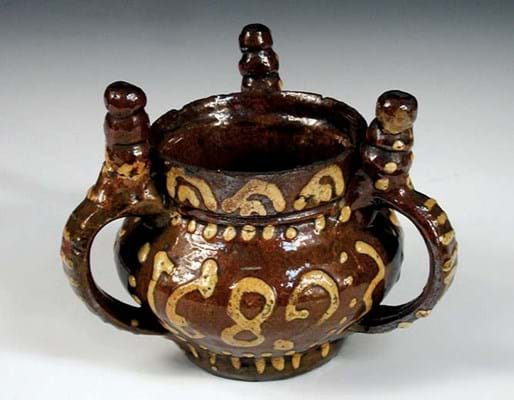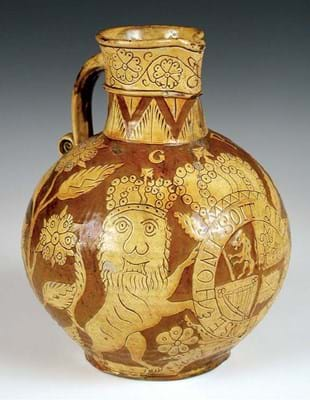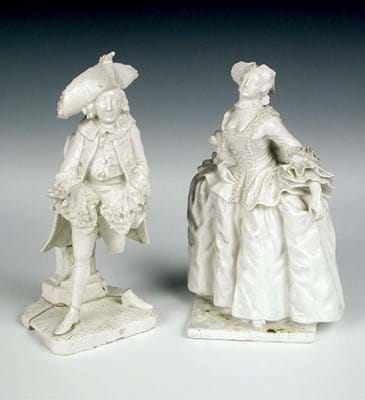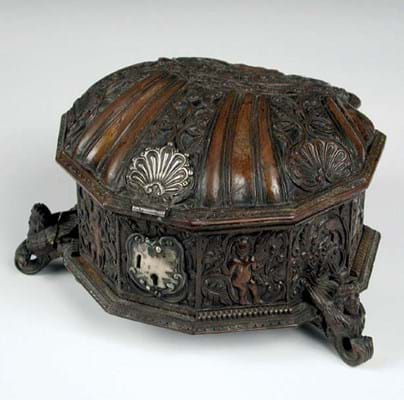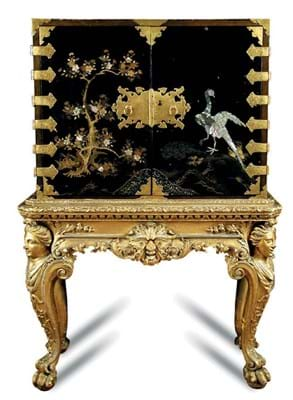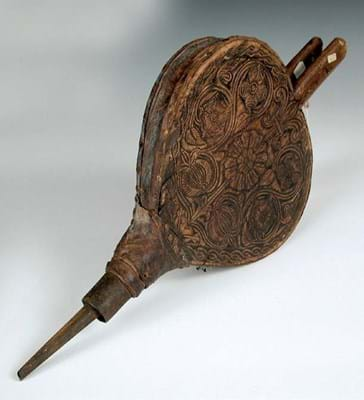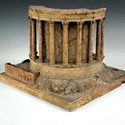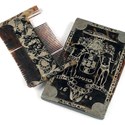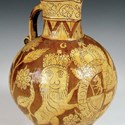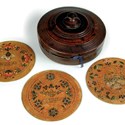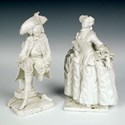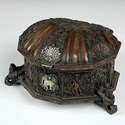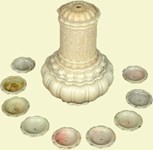A CROWDED room at a country auction, bids ranging from £20 to £70,000 and a large consignment from something of a trade legend. They don’t make them like that any more.
Actually, although such sales may come along less often than before, come along they do. The fine art sale at Cheffins (22.5% buyer’s premium) at Cambridge on November 30-December 1 is a case in point.
“Quite like the old days with a buzz in the room as well as all the online and phone bids,” said auctioneer Jonathan Law, looking back on his best sale of the year. Ninety per cent of the 1100 lots found buyers notching up a total just shy of £1.4m.
Providing nearly a third of the total were the 275 lots from the collection of renowned dealer Eila Grahame.
Many a connoisseur will have fond memories of her shop in Kensington Church Street which Miss Grahame opened at the age of 34 in 1969 and ran until her death seven years ago. Some less-learned shoppers may remember leaving it intimidated and wondering what they did wrong, but that’s another story.
Consigned to Cheffins were her stored stock and the contents of her London flat and Suffolk cottage – much of which hadn’t been seen for 20 years – to raise money for the Art Fund and her local country church, St Mary’s at Ufford.
The auctioneers were instructed to ensure everything sold – hence the here-to-sell estimates, explained Cheffins ceramics and collectables expert George Archdale.
Doubtless the estimates would have brought a formidable response from Grahame, who never knowingly undersold anything, but the policy worked with only three lots failing on the day and most improving upon modest guidelines.
One window of the Grahame shop contained ceramics, the other ‘curiosities’. Both were in keen demand at Cambridge.
The star lot was the three cracked and chipped, c.1740-45 Doccia plates which made £70,000 against a £4000-6000 estimate and were illustrated in the News Digestof ATG No 2272. “The plates aroused a lot of comments including people wondering who’d pay big money for cracked plates,” Archdale said. “In fact they made £10,000 more than the Grahame price tag.”
The winning bid, tendered by a Continental dealer, is the latest in a string of strong prices for polychrome decorated Doccia wares of this period. Sotheby’s sale of items from the collection of the late John Winter in December 2015 included two dishes hammered at £55,000 each – one decorated in the Du Paquier manner with bold floral sprays and another printed in sepia and painted in blue, mauve, yellow and brown with a view on the Grand Canal, Venice after Canaletto.
More of a puzzle was one of the high-selling collectables, a late 17th-early 18th century SpanishAmerican shell-shaped box. The 9¾in (25cm) wide box with velvetlined compartmented interior was relief carved with figures, monkeys and foliage to the sides and with two figures and an eagle to the silverhinged lid. The £350-500 estimate on a fairly early Western piece from the New World was irrelevant but it was a surprise to see the box go at £17,000 to a Midlands dealer who presumably had a buyer waiting.
The pattern of demolished estimates was set from the second lot – a 12¼in (31cm) tall Barnstaple ewer which sold to the UK trade at a six-times-estimate £9500. Typically decorated with yellow slip sgrafitto, it featured a GR above the royal coat of arms and was incised with flowers, a verse andJohn Briant 1771.
Made in Kent Wrotham ware, a simple red clay pottery, was made in abundance in the Kent village and surrounding hamlets in the late 17th century. Being made for everyday use not many pieces survive – some say only a few hundred – but the Grahame collection included five.
The best was a tag or puzzle jug incised with the date 1689 and initialled I.I. for John Ifield, and GG, possibly for George Gypson.
Estimated at £1500-2500, the 4½in (11.5cm) tall, three-handled, brown and yellow jug went to an American collector at £7500.
Topping 10 lots of English delft was a London blue and white posset pot and cover that had the appeal of a date 1692 below initials W & HA. The body of the pot was cracked radially in half, but it went to the trade at £5000 (estimate £1500-2500).
Damage did not diminish interest in a series of white-glazed Bow figures of theatrical subjects.
Examples of the well-documented pair modelled as Kitty Clive and Henry Woodward playing figures in a Garrick farce doubled hopes at £12,000. Clive’s hat was chipped and the 10½in (27cm) high Woodward figure appeared to have been broken in half and reglued.
An 8¼in (21cm) tall figure of Garrick himself suffered chips and a radial crack from waist to base but sold to a US collector at £7000 against a guide of £600-900.
Topping the works of art was one of the cork models of classical buildings made from the 18th century onwards by Neapolitan and Roman craftsmen for the Grand Tour trade.
So accurate that they became teaching tools for student architects in London, they are in huge demand. Last year a 2ft 2in x 12in x 10in (66 x 30 x 25cm) model of the Temple of Zeus at Paestum attributed to the Naples workshop of Dominic
Padiglione made £44,000 at Hampstead Auctions.
The model of Templo Della Sibilla in Tivoli offered at Cheffins was marked for Antonio Chichi (1743-1816), probably the most famous of all cork model makers.
Illustrated on these pages, the 18in (46cm) square, 14¼in (36cm) high model took a 12-times estimate £56,000 selling to a German buyer. Also guaranteed to bring international interest were examples of the tortoiseshell boxes and combs produced in Port Royal, Jamaica, during the period between Britain’s capture of the island in 1655 and the earthquake and tsunami which swept away half the town in 1692.
Though little is known about him, the English emigre Paul Bennett is generally acknowledged as one of the finest makers. In February 2015 an engraved three-part comb case dated 1688, ‘possibly by Paul Bennett’, sold for $33,000 (then about £21,000) at Bonhams New York.
Two lots of wig combs at Cheffins were each estimated at £3000-5000. A silver-mounted case dated 1688, engraved and gold dusted with an armorial and a cashu tree and containing one comb, went to an American collector at £8000.
The other lot, comprising two combs in a case scratch-engraved with tulips, took £6000.
One of the earliest pieces of English craftsmanship was a boxed set of eight Elizabethan wooden roundels. There is a near identical set in the St Albans museum.
These thin wooden trenchers were popular on 16th and 17th century tables on which to serve dainties, then turned over to show painted proverbs, fables or, in this case, biblical quotations. They were doubtless meant to trigger suitable conversation after the meal.
Another trade buy, the 5in (12.5cm) diameter roundels and their box went at £12,000 (estimate £1000-2000).
Among a wealth of 17th and 18th examples of anonymous English craftsmanship was a pair of bellows inscribed to one side with flowers and to the other Send Out Breth & Make No Strife Bellows Like A Quiat Wifeabout the date IV 4 1668 MA. They took a 30-times estimate £9000.

